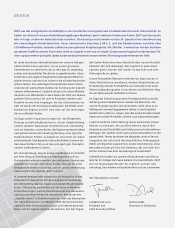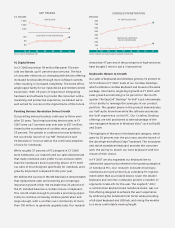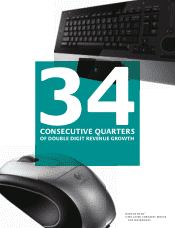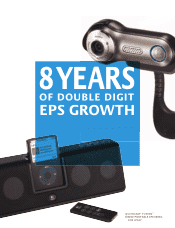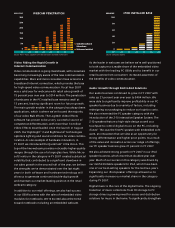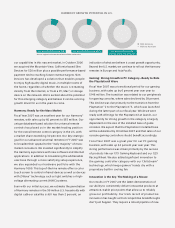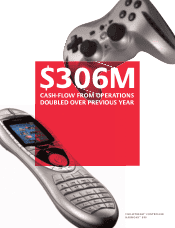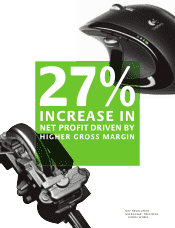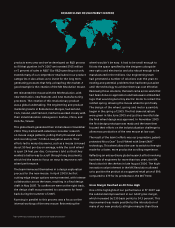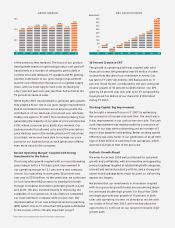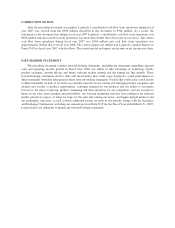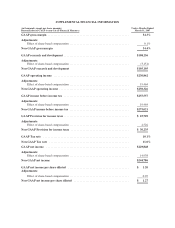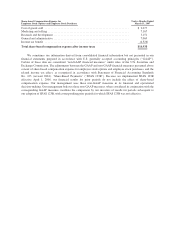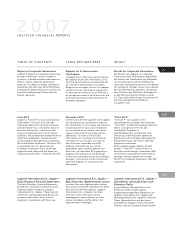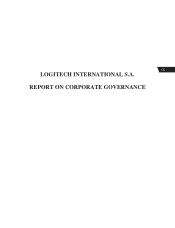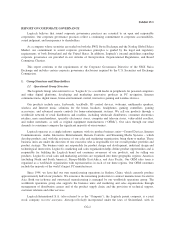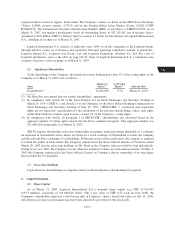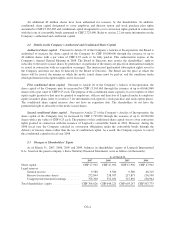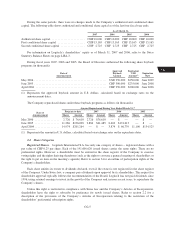Logitech 2007 Annual Report Download - page 17
Download and view the complete annual report
Please find page 17 of the 2007 Logitech annual report below. You can navigate through the pages in the report by either clicking on the pages listed below, or by using the keyword search tool below to find specific information within the annual report.
RESEARCH AND DEVELOPMENT CENTERS
products every year and we’ve developed an R&D process
to fi ll that pipeline. In FY 2007 we invested $105 million
or 5 percent of sales in R&D*. Our R&D spending not only
exceeds many of our competitors’ retail sales in our product
categories; it also allows us to invest for the long term,
generating products that help us leapfrog the market. A
good example is the creation of the MX Revolution mouse.
We reinvented the mouse with the MX Revolution, with
new mechanics, new features and new manufacturing
processes. The creation of this revolutionary product
was a global undertaking. The engineering and product
marketing teams in Romanel-sur-Morges, Switzerland,
Cork, Ireland, and Fremont, California worked closely with
their industrialization colleagues in Suzhou, China, and
Hsinchu, Taiwan.
This global team generated their initial ideas in November
2004. They started with extensive consumer research
on mouse usage patterns, polling thirty thousand users
and recording over 7 million navigation events. Their
efforts led to many discoveries, such as a mouse is moved
about 50 feet per day on average, while the scroll wheel
is spun 24 feet per day. Consumers told us that they
wanted a better way to scroll through long documents,
which led the team to focus on ways to improve scroll-
wheel performance.
The team immersed themselves in a design exploration
process for the new mouse. In April 2005 the fi rst
cutting-edge design options were presented, with intense
collaboration across the team, resulting in a fi nal design
draft in May 2005. To confi rm we were on the right track,
the design draft was presented to consumers for feed-
back during the summer of 2005.
Running in parallel to this process was a focus on the
internal workings of the new mouse. Reinventing the
wheel wouldn’t be easy: it had to be small enough to
fi t into the space specifi ed by the designers alongside
new optics and electronics and also robust enough to be
manufactured in the millions. Our engineering team
had generated a number of solutions over the years to
existing and potential problems that had been put aside
until the technology to achieve them was cost effective.
Reviewing those solutions, the team came across work that
had been done on application and task-aware embedded
logic that would signal a tiny electric motor to retract the
ratchet spring, allowing the mouse wheel to spin freely.
The design of the wheel, spring and motor assembly
began in the spring of 2005. The fi rst demonstrations
were given in late June 2005 and just two months later
the fi nal wheel design was approved. In November 2005
the fi rst design prototype was ready and the team then
focused their efforts on the industrialization challenge to
allow mass production of the new mouse at low cost.
The result of the team’s efforts was our proprietary, patent-
protected MicroGear™ Scroll Wheel with SmartShift™
technology. This wheel allows the user to switch to free-spin
mode for a faster, more productive scrolling experience.
Refl ecting an extraordinary global research effort involving
hundreds of engineers for more than two years, the MX
Revolution hit the shelves in late August 2006. The high-
innovation value inherent in the MX Revolution allowed
us to position the product at a suggested retail price of $99,
compared to $79 for its predecessor, the MX™1000.
Gross Margin Reached an All-Time High
One of the highlights of our performance in FY 2007 was
the substantial improvement in our GAAP gross margin,
which increased by 230 basis points to 34.3 percent. This
improvement was made possible by the introduction of
many of our new products at higher margins than those
* Non-GAAP measure excluding the cost of share-based compensation


